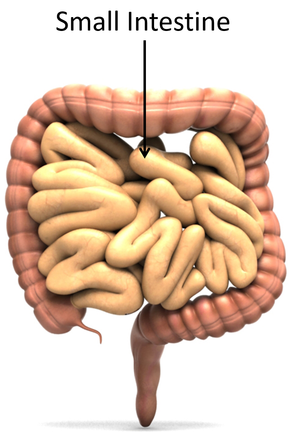Small Intestine
Contents
Key Stage 2
Meaning
The small intestine is part of the digestive system.
Key Stage 3
Meaning
The small intestine is an organ in the digestive system which absorbs nutrients into the blood.
Adaptations of The Small Intestine
- The small intestine is a very long tube to give a large surface area to absorb nutrients.
- There is around 1kg of bacteria inside the small intestine which helps digest the food.
- There are digestive enzymes in the small intestine which break down large molecules into smaller molecules.
- Only small molecules can be absorbed into the blood through the wall of the small intestine.
Key Stage 4
Meaning
The small intestine is an organ in the digestive system which absorbs nutrients into the blood.
About The Small Intestine
- The Small Intestine is where food is broken down by digestive enzymes including amylase, protease and lipase before being absorbed into the blood.
- The Small Intestine produces some of its own digestive enzymes including amylase and peptidase but also takes some digestive enzymes from the pancreas including pancreatic amylase, trypsin and lipase.
- The Small Intestine is long and folded to increase the surface area.
- The Small Intestine has structures called Villi which are extra folds in the surface to increase the surface area.
- The blood supply to the villi in the Small Intestine is very good in order to constantly supply enough fresh blood with few nutrients keeping a high concentration gradient between the food and the blood.
- There is around 1kg of bacteria inside the small intestine which helps digest the food.
- Only small molecules can be absorbed into the blood through the wall of the small intestine.
References
AQA
- Small intestine, page 31, GCSE Biology; The Revision Guide, CGP, AQA
- Small intestine, page 45, GCSE Combined Science Trilogy 1, Hodder, AQA
- Small intestine, pages 93, 100-1, 103, GCSE Biology; Student Book, Collins, AQA
